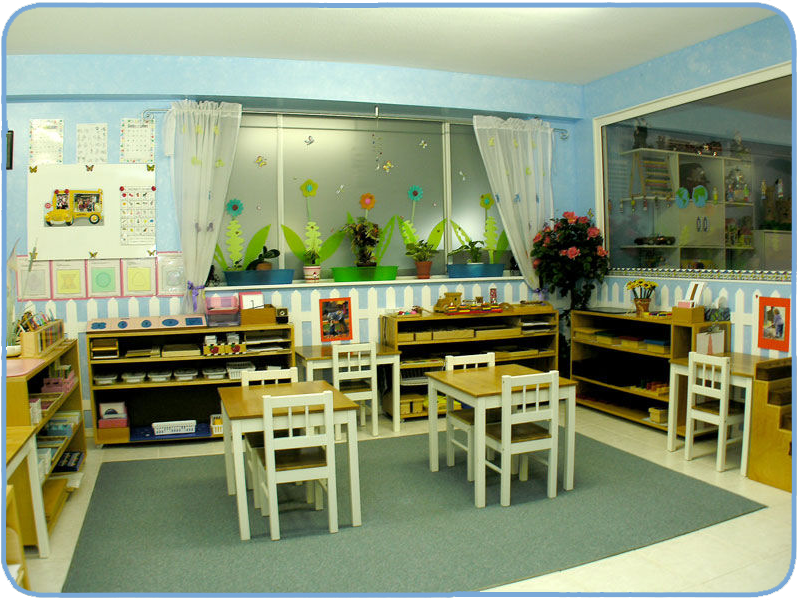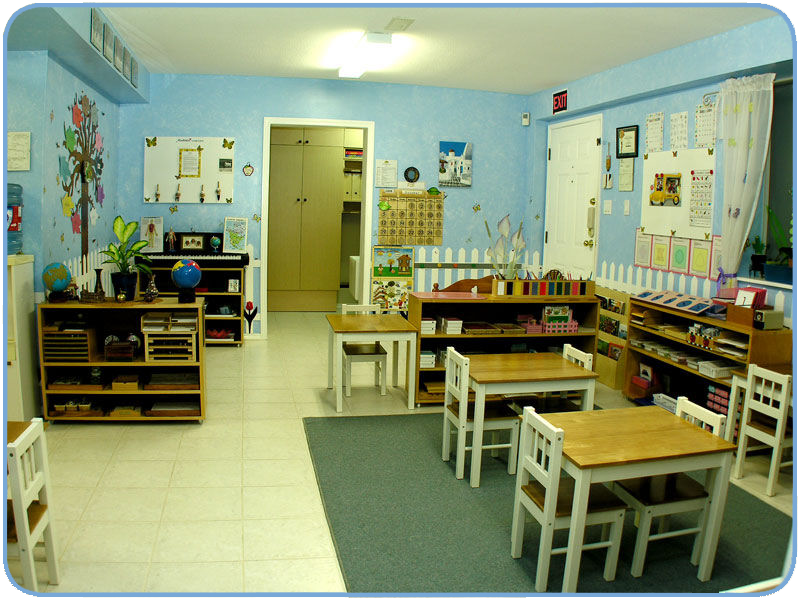

The Montessori classroom is indeed a child's world, geared to the size, the pace and interest of boys and girls between the ages of three and six. It is designed to put the child at ease by giving her freedom in an environment prepared with attractive materials. These materials are arranged on low shelves within easy reach of even the smallest youngster.
The tables and chairs in the room are movable, permitting a flexible arrangement for many activities. The children also work on small mats on the floor where they are naturally comfortable.
The Montessori materials in the classroom can be divided into three main groups: The Practical Life Exercises, which are the beginning activities for three and four year-old children; The Sensorial Materials, which can be used by all ages; and The Academic Materials, which await each child's moments of interest in reading, arithmetic and geography.
The guiding principle for the arrangement and content of a Montessori classroom arises from the notion that children learn through experience. Therefore, classes included mixed age groups, have a non-competitive atmosphere, accommodate for different abilities and contain a wide variety of interesting manipulative equipment.
The Practical Life Exercises help the child to perfect coordination, lengthen her span of concentration, provide opportunities for learning to pay attention to detail and aid in developing good work habits.
 The Sensorial Materials help the child to become aware of details by offering her, at first, strongly contrasted sensations, such as red and blue, and then variously graded sensations, such as many different shades of blue. Each of the Sensorial Materials isolates one defining quality such as color, weight, shape, texture, size, sound, smell, etc. The equipment emphasizes this one particular quality by eliminating or minimizing other differences.
The Sensorial Materials help the child to become aware of details by offering her, at first, strongly contrasted sensations, such as red and blue, and then variously graded sensations, such as many different shades of blue. Each of the Sensorial Materials isolates one defining quality such as color, weight, shape, texture, size, sound, smell, etc. The equipment emphasizes this one particular quality by eliminating or minimizing other differences.
Other classroom materials and activities provide content in geography, history, science (biology and botany), art, music, nutrition and physical education. Daily scheduling incorporates both individual and group work.
A Montessori setting offers many opportunities to young children to expand their knowledge during the years when they are motivated by spontaneous interest. The freedom of the Montessori setting allows each child's own interest to determine her progress.
For more information on our program please contact us at info@kensingtonmontessori.com or call 604-298-5951.










